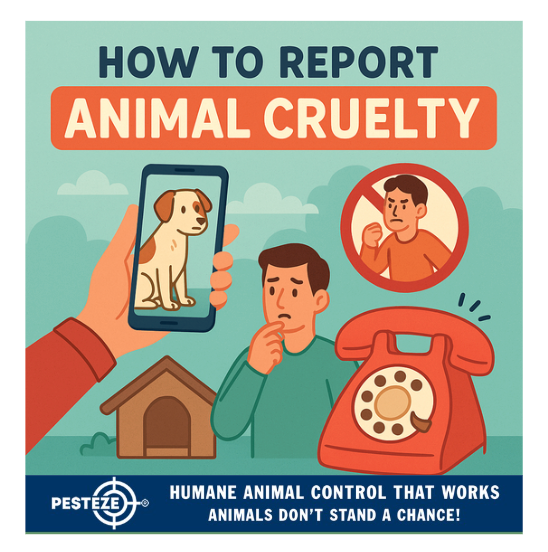HOW TO REPORT ANIMAL CRUELTY IN YOUR AREA

HOW TO REPORT ANIMAL CRUELTY IN YOUR AREA
SUMMARY
Animal cruelty is a serious issue that affects pets, strays, and wildlife. Knowing how to report abuse or neglect helps protect animals and ensures they receive the care they deserve. This guide explains safe and effective ways to take action.
FEATURES
-
Recognize cruelty: Learn signs of abuse, neglect, or abandonment.
-
Document evidence: Take notes, photos, or videos safely.
-
Stay safe: Never confront the abuser directly.
-
Contact local authorities: Report to animal control or police.
-
Use hotlines and shelters: Many regions have cruelty-reporting services.
-
Follow up if needed: Ensure proper investigation and care.
GUIDE DESCRIPTION
Animal cruelty can take many forms, from physical abuse to neglect, abandonment, or lack of proper shelter and medical care. Recognizing and reporting it promptly is vital to protecting vulnerable animals. Here’s how to report animal cruelty in your area safely and effectively.
The first step is to recognize signs of cruelty. These may include visible injuries, emaciation, untreated illness, poor living conditions, lack of food or water, or being left outdoors in extreme weather. Consistent patterns of neglect are also considered cruelty under most laws.
If you suspect abuse, document evidence safely. Take photos, videos, or notes of what you observe, including dates, times, and specific details. Never trespass or put yourself in danger, but reliable documentation can help authorities act quickly.
Always prioritize your safety. Do not confront the suspected abuser, as this could escalate the situation or endanger you and the animal. Instead, rely on official channels to investigate.
The next step is to contact local authorities. In most areas, animal control agencies, humane societies, or police departments handle cruelty reports. Many regions also have cruelty hotlines, allowing you to make anonymous reports. Provide them with your documentation and as much detail as possible.
If available, use shelters and advocacy groups. Local animal shelters or rescue organizations often work alongside law enforcement to respond to abuse cases. They may also provide resources for ongoing care and rehabilitation of the animals.
Finally, follow up if necessary. While you may not always receive detailed updates due to privacy laws, checking in ensures that your report was received and acted upon.
By recognizing cruelty, documenting safely, and reporting through proper channels, you help enforce animal protection laws and give vulnerable animals a chance at rescue and recovery.
- Saneeth Thota


Comments 0